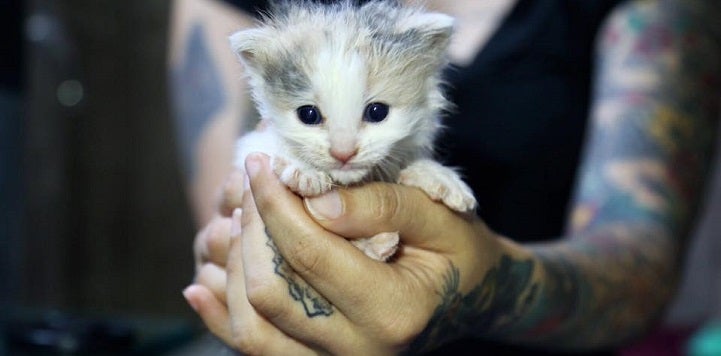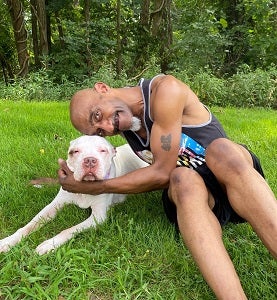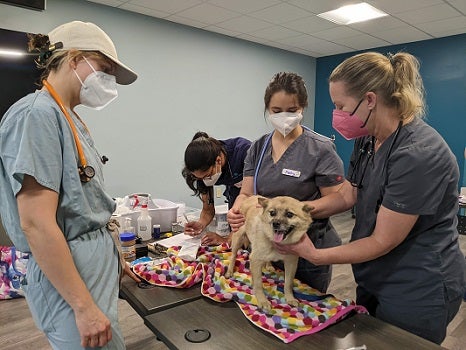
Reconsidering your mission (Part I)
Changing or adding onto your work doesn’t have to mean abandoning your purpose
It’s good to get in the habit of reviewing your organizational mission every now and then. Sometimes, organizations drift away from their true purpose and regular reviews provide an opportunity to get back on track before things really get out of hand. Sometimes, however, the landscape changes and the services you provide are no longer critical, or the audience you are targeting doesn’t need your help in the same way.
It's scary to compare your organizational purpose to what you do every day, or to ask whether your organization still needs to exist. But let’s be frank: the chance to help animals in need is what inspired most of us to work in this field, and it’s what inspired the formation of most of the organizations we work for.
So, if there are animals in need in your community who you aren’t helping right now because they weren’t part of your original business plan, don’t you want to change that?
We spoke to four organizations that did: three animal welfare groups and one human services agency. Each organization looked in the mirror and saw types of animals or situations being neglected in their community. And each organization made the choice to help in ways they had not been helping before, but that still kept them true to the mission that sparked their existence in the first place.
In Part I, we will introduce you to the organizations and find out why they considered adjusting their work as well as what new elements have been added to their roster of public resources. In Part II, which will run the week of September 5th, we will hear about the impact their change of focus has had and find out what words of advice they have for other organizations who might be hesitant about changing “who” they are in the eyes of their community.
Meet our organizations:
 Dog Bless in Charleston, West Virginia, was formed in 2012 to promote rescue efforts at Kanawha-Charleston Humane Association (KCHA). When Dog Bless began, the shelter was struggling and had a disheartening save rate that dipped as low as 31%. The group helps KCHA by taking photos of shelter animals, marketing them on social media, coordinating vet and foster care and organizing transports to responsible rescues in other areas.
Dog Bless in Charleston, West Virginia, was formed in 2012 to promote rescue efforts at Kanawha-Charleston Humane Association (KCHA). When Dog Bless began, the shelter was struggling and had a disheartening save rate that dipped as low as 31%. The group helps KCHA by taking photos of shelter animals, marketing them on social media, coordinating vet and foster care and organizing transports to responsible rescues in other areas.
Chicago-based One Tail at a Time (OTAT) was founded in 2008 to “End pet homelessness by making pet ownership a joyful and accessible experience for all. We accomplish this by rescuing animals from overcrowded shelters, placing them in loving forever homes and providing support and resources to pet owners in need.”
Wagon Tails Farm Rescue was established in Beulaville, North Carolina, in 2018 “to rescue animals in need, reimagine our world, and remember we can make a difference.” The organization’s focus has always been on helping cats and dogs from overcrowded local shelters.
Dorcas Ministries in Cary, North Carolina, which has been in existence since 1968, is an interracial, faith-based human services agency that “provides compassionate assistance to area residents to empower people to become stable and self-sufficient.” Dorcas has historically offered holistic case management, career coaching and programs to support families that are working to increase their stability.
What spurred your organization to consider changing the work you do in the community?
“When we began, KCHA had a very low save rate and the conditions were deplorable,” says Khrista Messinger, a board member for Dog Bless. “Over time, however, we convinced them that other shelters were doing progressive programs and with our help, they could do it too. Now KCHA has become a model of what a lifesaving shelter can be.
 “As the shelter save rate increased, it didn’t have to rely on rescues as much as it used to,” she adds. “While many of the other local rescues turned their attention to shelters in different cities and counties, Dog Bless saw how providing pet owners with food meant those animals could stay with their families rather than being surrendered to local rescues and shelters. So we turned our attention to people who needed help caring for their pets.”
“As the shelter save rate increased, it didn’t have to rely on rescues as much as it used to,” she adds. “While many of the other local rescues turned their attention to shelters in different cities and counties, Dog Bless saw how providing pet owners with food meant those animals could stay with their families rather than being surrendered to local rescues and shelters. So we turned our attention to people who needed help caring for their pets.”
“We started looking at ways to be strategic about our growth after OTAT opened an adoption center in 2015 and experienced a large influx of new supporters,” says cofounder Heather Owen. “I asked Chicago Animal Care and Control (CACC) for information about its most vulnerable populations, a number of whom we already served via programs on behavior issues or parvo. When they shared with me how many cats and kittens were still dying in the shelter, however, I was kind of shocked that the need was still so high.”
“As a human services agency, Dorcas never really considered companion animals as part of the conversation until 2020, when the pandemic happened,” says Jill Straight, director of client services at Dorcas. “As the group made a shift to curbside food delivery, volunteers began to see pets in the back seats of cars. When staff called clients to check on them, they heard barking in the background. When they asked how families were coping with the pandemic lockdown, they heard that their pets were key to helping them get through the loneliness.”
“WTFR started thinking beyond our focus on cats and dogs because we are in an area near several military bases, which have a lot of pet restrictions. As a result, there is a growing interest from the community in keeping reptiles as pets,” says Rorrie Spengler, WTFR’s farm manager and veterinary coordinator. “Smaller reptiles do require specialized care; they also tend to have long lifespans and frequently need rehoming. There was only one reptile rescue in the area and they were full, with long waiting lists for intakes. It became clear that some of these animals needed a place to go.”
Were there concerns around adjusting or adding to your focus?
“I was worried that all the ‘dog people’ wouldn't want our time, attention and resources to go towards cats,” Heather says. “We also didn't want to take away from OTAT’s dog program, so we were going to make sure everything was separate. But our worries about losing supporters were dispelled super quickly and we have seen lifesaving for both dogs and cats at CACC continue to increase year over year. In fact, since cats were such a success, we expanded again to add rabbits and guinea pigs and we continue to see more people join us in support.”
“WTFR’s board was also skeptical about expanding into helping other species,” Rorrie says. “The main concerns centered on the need to build up specialized reptile knowledge as well as fund their unique supplies and medical needs. It turns out that the answer to those issues was the hiring of a reptile enthusiast with over a decade of experience and a singular drive towards researching proper care.”

How has your day-to-day work changed given these new areas of concern?
“We have partnered with local food banks to continue offering those resources to pet owners in need,” says Khrista. “But we also knew that there was a great need for low- or no-cost spay/neuter and vaccinations, so we applied to the West Virginia Department of Agriculture for a grant and have been able to fund those veterinary services for low-income families.”
“Dorcas wanted to help pets stay with their families, so we modified the client intake process to include explicit questions about the needs of furry family members,” Jill says. “The group now offers numerous services based on that input, including a mobile vet program and an ongoing food bank run in partnership with HSUS’s Pets for Life program.
“The Pets for Life program arranges for 18-wheeler-sized shipments of donated pet food and supplies to be delivered from Chewy warehouses to our parking lot,” she continues. “We have established a network of a dozen partners who come with pick-up trucks, SUVs and U-hauls to pick up the food and supplies and distribute them to families in need through their own networks across multiple counties.”
“We jumped in right away and took a lot of bottle babies, ringworm kittens and cats with upper respiratory infections,” says Heather. “It was a learning experience, but at the end of the day that's who needed us,” Heather says. “Those early days were proof that we can do hard things.”
Learn more by checking out parts II and III.

Liz Finch
Senior Writer
Best Friends Network
If you enjoyed this program spotlight, you can find our complete catalog of spotlights here.